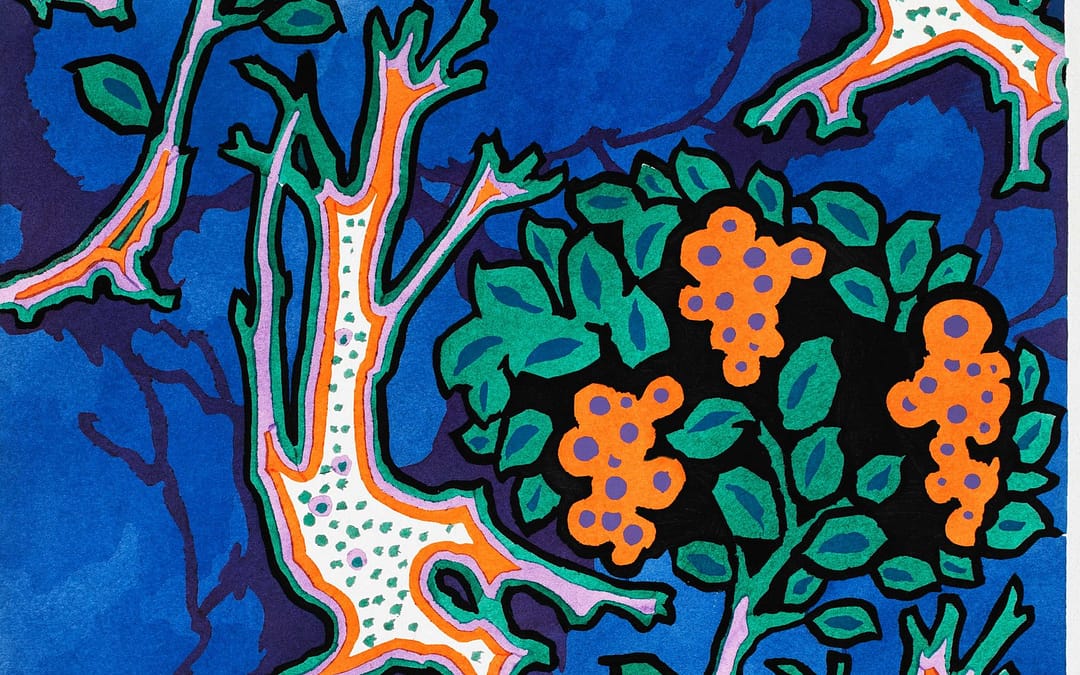Emile-Allain Séguy, professionally known as E.A. Séguy, was a French designer during the Art Deco and Art Nouveau movements of the 1920s. He primarily created patterns and textiles inspired by the natural world. Because of his particular fascination with insects, he has been confused with Eugene Séguy, a French entomologist active during the same time period. However, it is Emile-Allain who created the popular Papillons and Insectes books, filled with illustrations of vividly colored butterflies and insects made using the pochoir—French for “stencil”—technique.
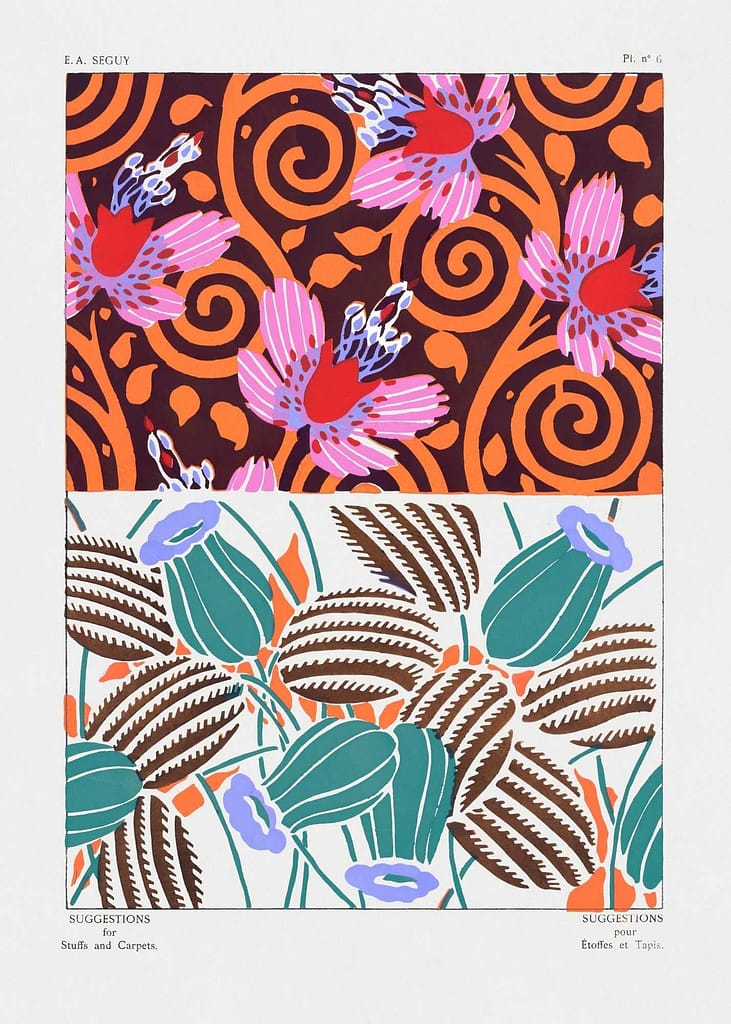
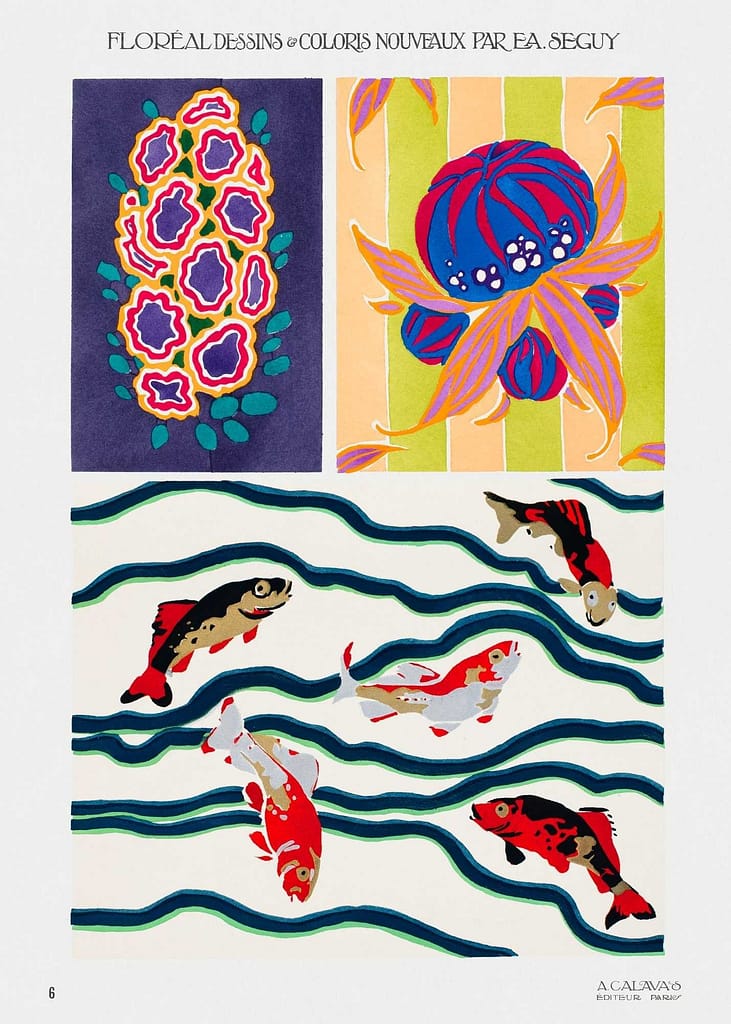
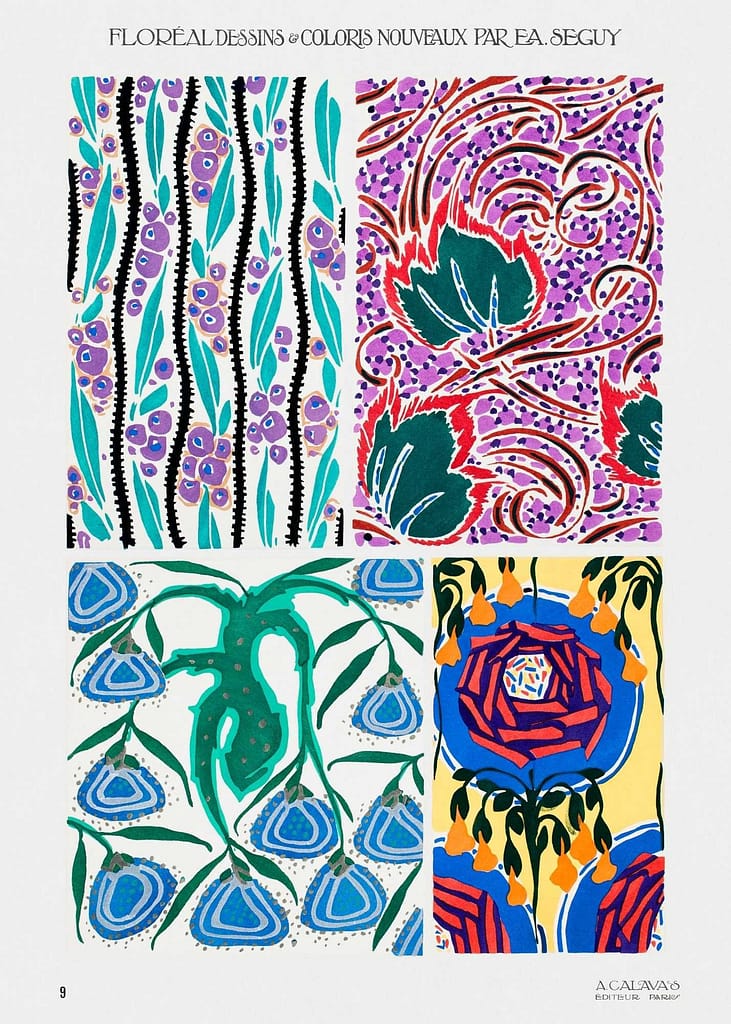
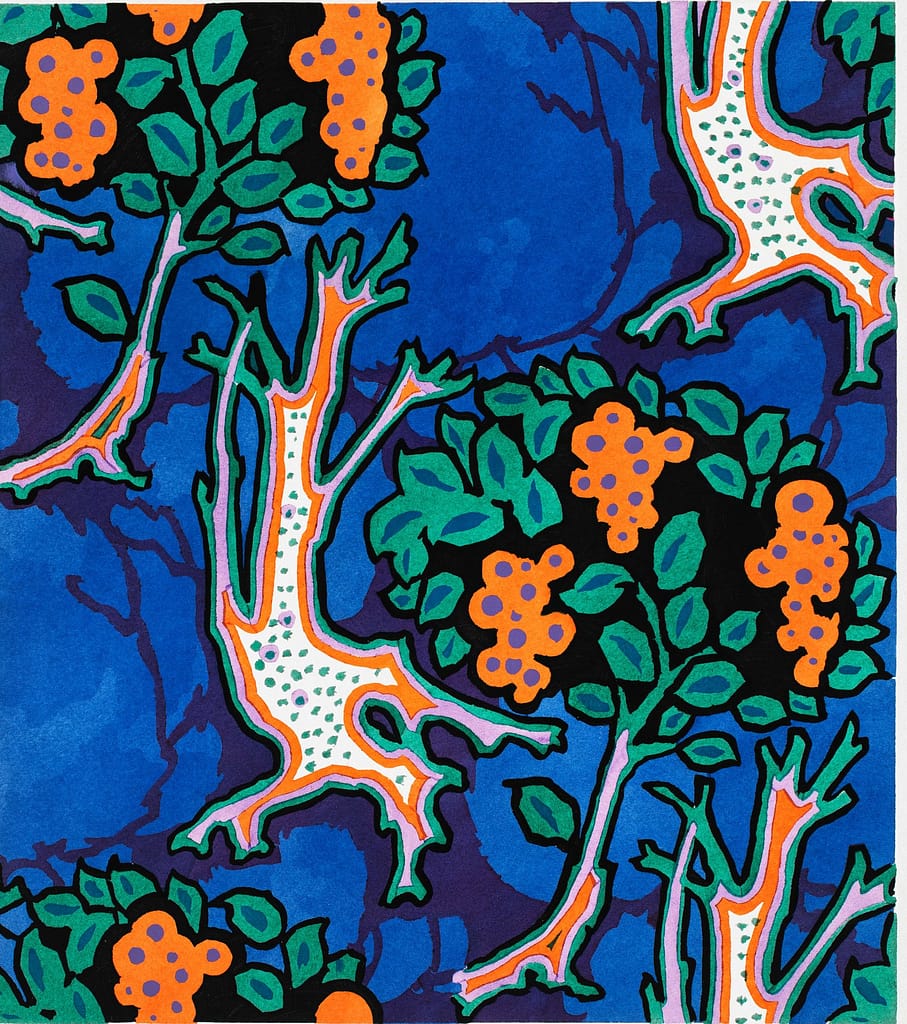
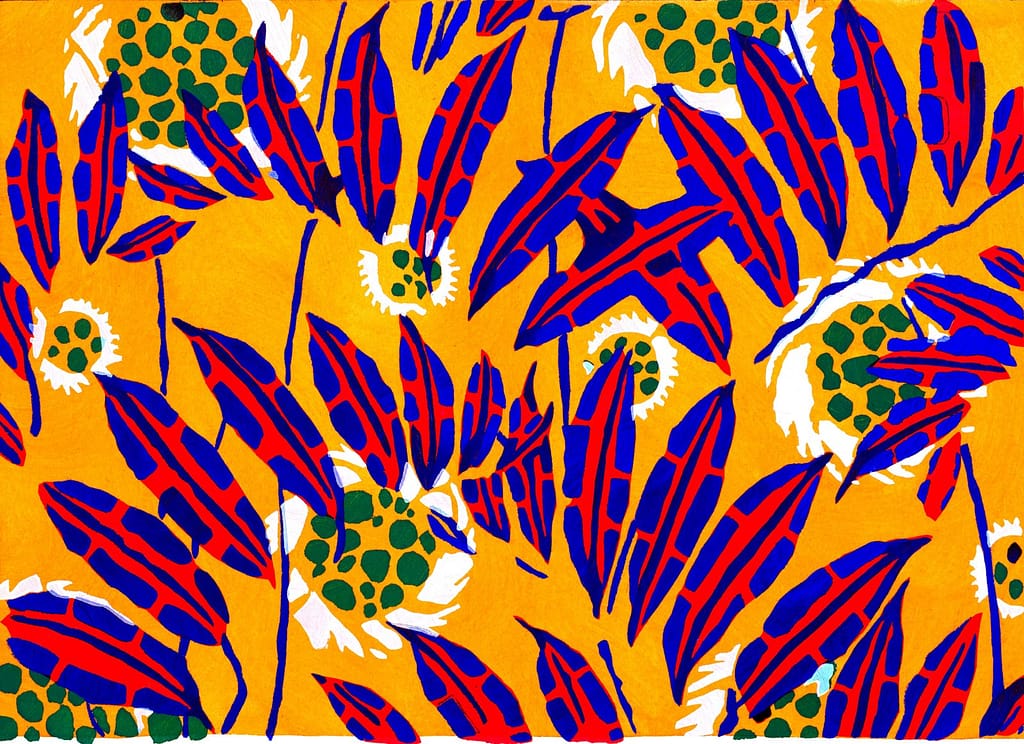
Simply stated, pochoir is the French word for stencil. In the 1920’s and 30’s Art Deco era, the color application process of the stencil was rejuvenated by the French, bringing color illustration processes for books and prints to new glorious heights. This interest in exploring the stencil process came in reaction to the proliferation of machine printing and the poor quality of color reproductions in publishing. With pochoir printing, the hand application of layers of pigment created dazzling effects that the camera or printing press could never replicate. Earlier stencil works, typically used for decorative surface ornament were quite primitive, with applied color areas outlined by the supporting cutout framework. New experimental techniques in pochoir refined the process using multiple layers of color applications for a single print. Pochoir printing was also easily combined with images made by lithography, woodcut, wood engraving, line drawings, or etchings, thus turning a decorative technique into fine art. Jean Saudé was one of the foremost artists to explore and promote pochoir techniques and his treatise, Traité d’Enluminure d’Art au Pochoir, published in 1925 did much to further this art form.
POCHOIR: technique
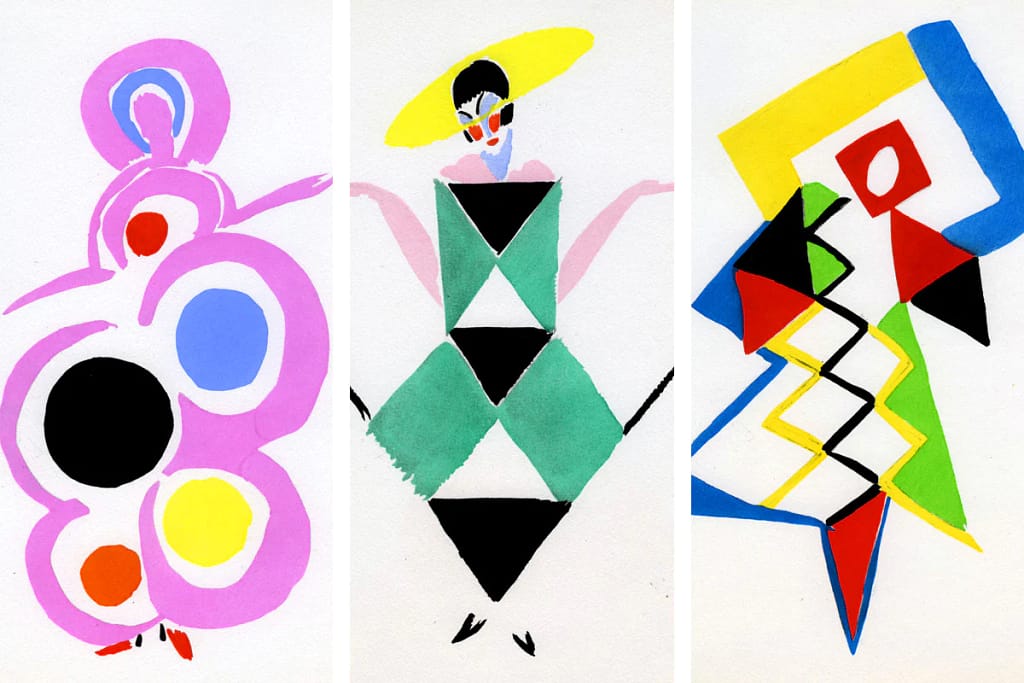
pochoir costume designs by Sonia Delaunay
With pochoir, a hand painted fashion plate, decorative or interior design, or illustration to be duplicated was carefully analyzed to determine each color layer. Often, but not always, an outline of the image was printed as a black and white lithograph and served as a base layer, especially in the design and fashion portfolios. In many interior illustrations, a line drawing or even a half-tone photograph was lithographed as the base layer. Each succeeding layer of color was then printed over the black and white litho layer. Depending on how intense the lithograph layer was, it would either be incorporated fully in the final image or be invisible and serve only as a guide to the image layout.
Separate stencils were cut, sometimes in thin sheets of copper, zinc, or aluminum, for every color component. Later stencil materials were made of celluloid or plastic and contemporary stencil materials are made of coated paper or acetate. Each successive color layer, using watercolor or gouache, was applied to the stencil with a brush called a pompon. Pigment on the brush could not be thick or runny, as paint could easily slide underneath the stencil and change the shape of the image. Therefore, it was necessary to really blot the pigment on the brush before applying it to the stencil and in the case of watercolor images, this was even more critical. Skilled printers could achieve incredibly subtle details using gradation and stippling, spattering or even simply drawing additional details with a small brush on the final layer. Sometimes as many as 100 stencils were used to recreate a single image, and the resulting print was surprisingly rich and detailed.
Entirely non mechanised, pochoir was both an intensive and highly luxurious way of producing images, one which suited perfectly the elegance and extravagance of the Art Nouveau and Deco fashion journals that were the source of its enormous popularity from the early 1900s to the glistening Jazz age. Artist-cum-designers, such as George Barbier and Sonia Delaunay, published their costume and textile designs in rich, luminescent pochoir folios, lending a lavish air of the haute couture to each new illustration, while everyone from bespoke furniture and wallpaper producers to high-end architects produced catalogues of exorbitantly expensive products for their endlessly wealthy clients.
Seguy produced eleven albums of nature themed illustrations and patterns, drawing inspiration from papillons and other insects, flowers, foliage, crystals and animals. Seguy was one of few artists that successfully combined both Art Deco and Art Nouveau styles in his work. His brightly colored geometric patterns were intended to be used as inspiration for such decorative items as textiles and wallpaper.
Dover Publications reproduced Seguy’s albums in a book entitled Seguy’s Decorative Butterflies and Insects in Full Color. The publisher had this to say about Seguy: “His aim was to make available dozens of examples of extremely colorful exotic animals that had been unjustly neglected by occidental decorative artists because of their rarity in life and in illustration. It is interesting to note that Seguy, while confident that butterflies would be readily accepted, made the special plea for the other insects that were constructed like wonderful machines and were thus entitled to the same consideration as an airplane fuselage, an ocean liner or locomotive; nature was a successful industrial designer!”
Seguy’s albums were created using a unique printing process called pochoir, which was popular in France at the turn of the 20th century. Pochoir is a process that utilizes the method of applying pigment to paper through the use of stencils. First, the artist created an image in watercolor or gouache. The design was then analyzed to determine the necessary colors and number of stencils needed. The stencils could be cut from any number of materials, including copper, zinc, oiled cardboard, or celluloid. The paint was applied through the stencils by brushes or pompons. The prints were produced entirely by hand assembly line style, and each one was individually examined and approved upon completion.
While simple in concept, pochoir could become quite complex in practice, with some images requiring the use of 100 or so stencils to produce a single print. The technique was regularly used to produce plates in French fashion journals as well as being used to illustrate industrial design, textile, interiors, and architecture folios.
Sources:
